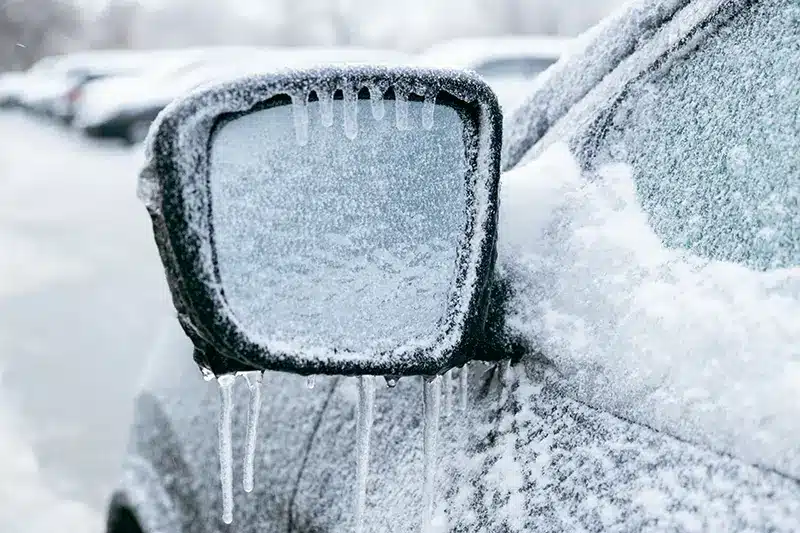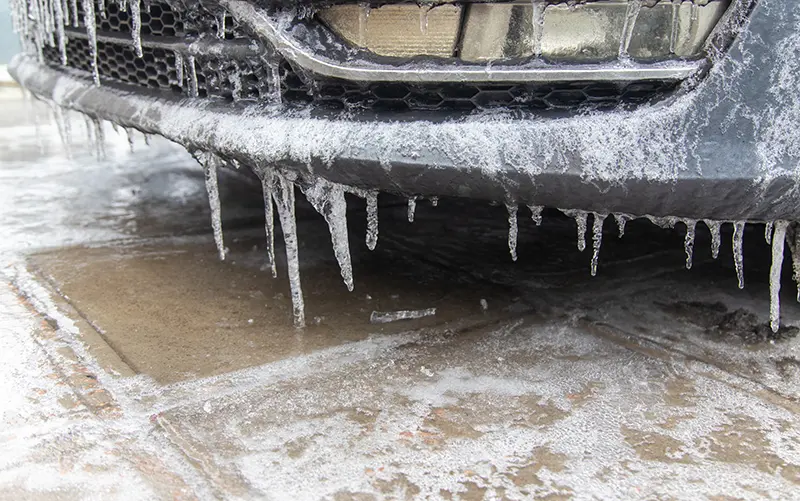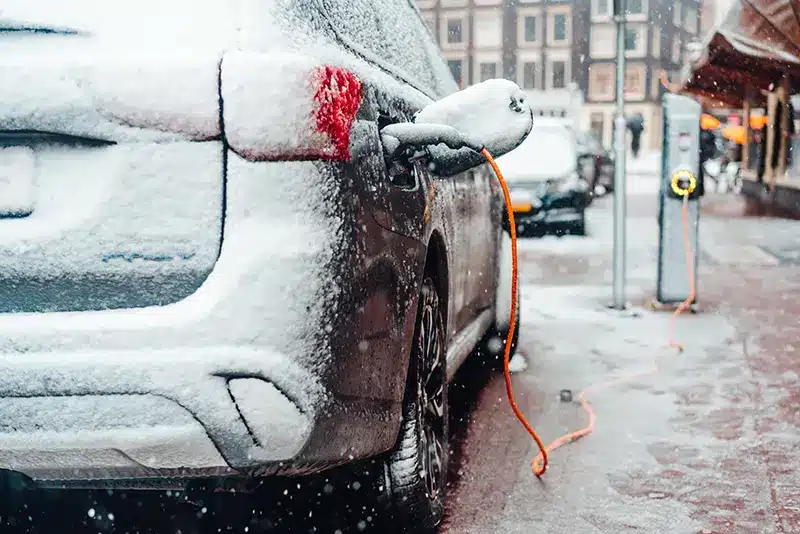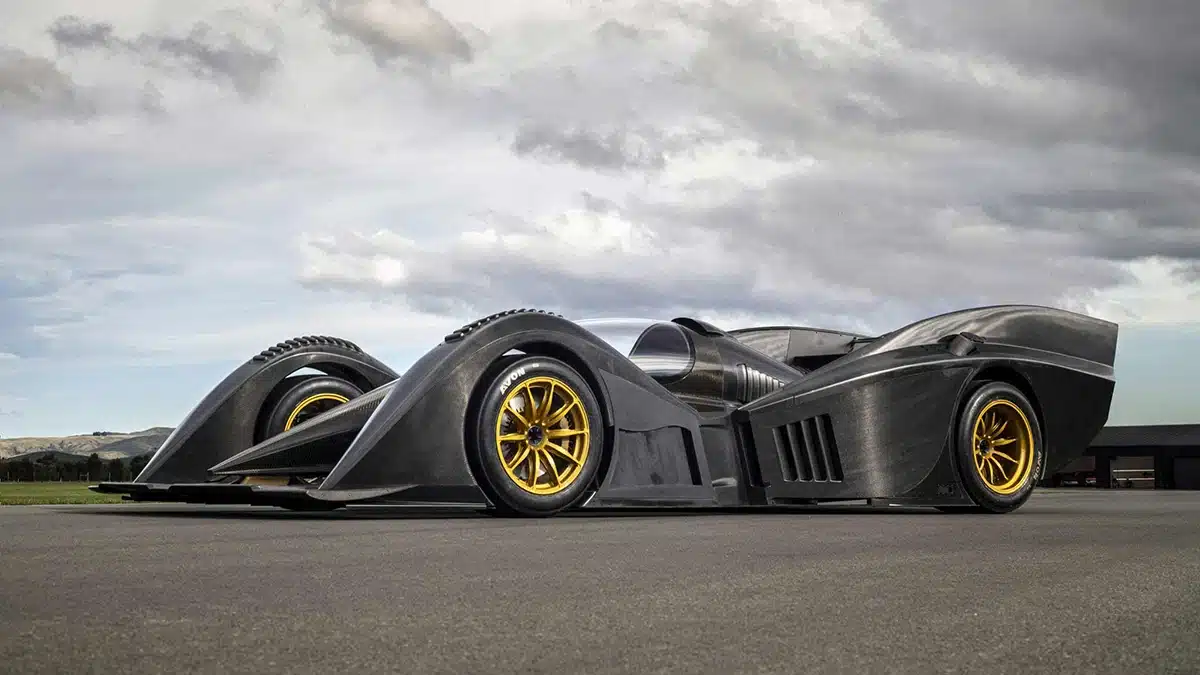
Electric car technology often brings about a sense of wariness and suspicion, especially in today’s fast-paced world dominated by social media.
Of course, electric vehicle technology is not particularly new, especially for those old enough to remember the familiar whir of the motor and clank of bottles as your friendly milkman delivered his rounds in the seventies (though the classic-shaped electric Pony milk float does actually go as far back as the 1940s).
So, as each winter bears down on us with the threat of future ominously icy days, let’s look at one of the most popular bits of misinformation and fake news that was recently circulating on social media.
Electric Car Freezing Traffic Jams

Many reports and images are being circulated indicating that an EV battery will die within 3 hours, potentially leaving you stuck in icy conditions in a non-moving traffic jam until you freeze. So how true is this?
Put simply, it’s a scare story – a frightener that is possibly more aimed at getting shares and ‘likes’ on social media to bolster the user far more than anything else.
It’s quite possible that this may in part come from start-stop technology that is designed to disable your engine when stationary at traffic lights or in jams.
Start-stop tech will automatically stop your engine when you become stationary and restart it when you gently press the throttle. Start-stop reduces fuel and decreases pollution in standard combustion engine vehicles.
Battery Dead
The big scare from such memes is that, should there be a severe cold weather event where traffic can be stuck for hours, will your battery succumb to the cold and die within an hour leaving you hopeless and cold?
It is a fact that all batteries suffer from the cold – they simply don’t like it. If you try to charge your iPad below 8 degrees centigrade a warning will pop up telling you that it’s too cold to charge the battery, and we know that phones will lose power faster in cold weather, so how does this affect your EV?

Of course, automobile designers at some point in the evolution towards electric vehicles have considered such scenarios in great detail.
Reuters recently ran a fact check to see whether an EV will run out of juice within 3 hours of being stuck in traffic leaving occupants bereft of heating.
The Reuters conclusion is that the claim is false. An EV when not moving uses such a small amount of power that it might even effectively outlast a combustion engined vehicle in a similar situation.
A recent US Department of Energy report revealed some surprising figures for the fuel consumption of cars when idle.
In a test rolling on from this, Car and Driver tested a Hyundai Sonata with a turbocharged 2.5 engine and found that the car would consume 0.3 gallons per hour when idle.
Overall, the US Department of Energy report found that on average, a 2-litre engine would consume 0.2 gallons per hour. If you take the power up to a V8, then you might double the consumption at idle.
In contrast, the German company TLK Energy revealed that an electric vehicle would potentially use up 4kW per hour in a similar situation – not much of a strain on a 60kWh battery and certainly not a situation that should concern anyone stuck in traffic in the January sales, should the UK get an icy eastern blast as you head towards IKEA.
What About Norway?
Talking of Scandinavia, alongside false EV battery claims, last year it was pointed out that the Norwegian Automobile Federation would be reducing subsidies for EV purchases amid concerns that batteries would lose too much power in their harsh winters.

Yet, the facts are muddled here: Yes, subsidies were to be reduced, but this was a factor of Norway’s success in encouraging its already eco-friendly population towards electric vehicles, to the extent that Norway felt it could simply remove subsidies without affecting the country’s push to EV.
Indeed, two years ago, Norway revealed that a whopping 90 per cent of all new vehicles sold were either electric or hybrid vehicles.
Freezing Tesla Driver
Compounding such myths with the anecdote of a freezing Tesla family caught in non-moving traffic (you can google that one) who were helped out by a trucker doesn’t hold much weight either.
The truth is that such a family did get stuck in a cold weather traffic jam, but the reality is they survived overnight with an 18 per cent battery charge left enabling them to safely drive to the local Supercharger to replenish.

To sum up, I think the future of electric cars is certainly looking a lot warmer than some of the posts on social media might imply…
For more articles like this, receive our weekly e-newsletter, including partner deals and all things motoring, register your email below.
Please note: You cannot subscribe to Smart-Motoring unless you put a tick in the checkbox below to indicate have read and agreed to our privacy policy.




Leave a Reply
You must be logged in to post a comment.